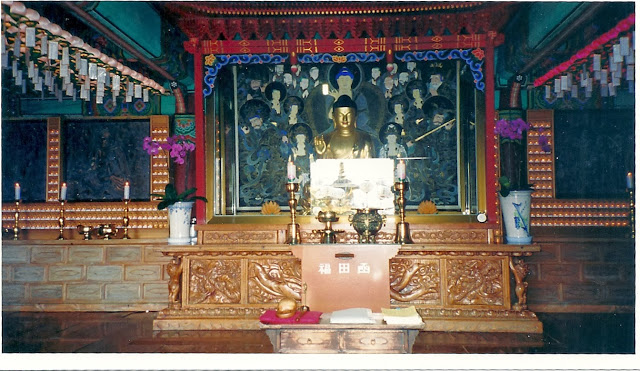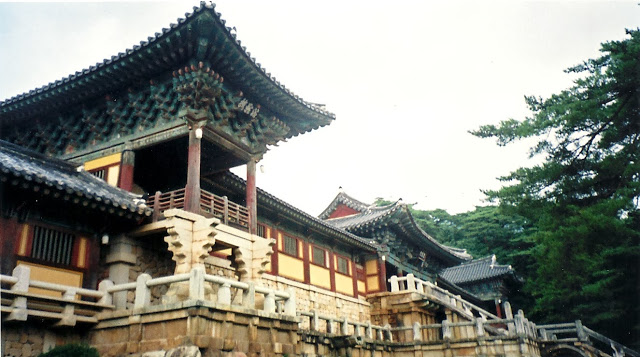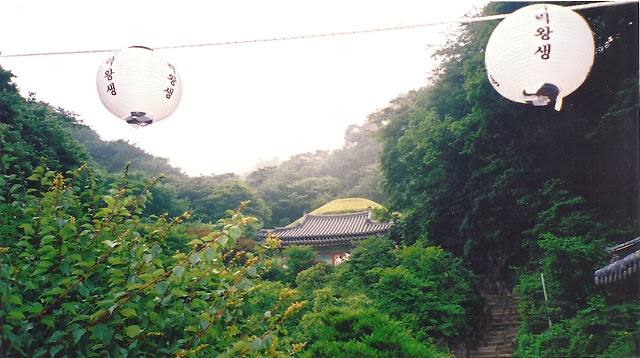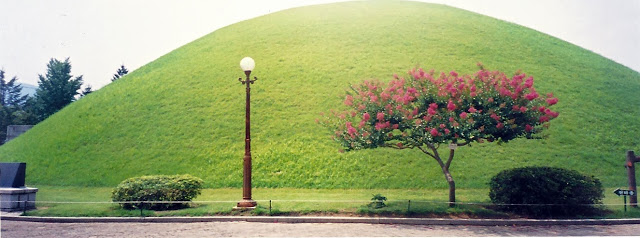

| Visitors Now: | |
| Total Visits: | |
| Total Stories: |

| Story Views | |
| Now: | |
| Last Hour: | |
| Last 24 Hours: | |
| Total: | |
Gyeongju-the treasure trove of Korean culture
As much as I loved constantly pulsating and ever chaotic Seoul, I really enjoyed the trip I took “down south” to Gyeongju, what many deem to be “the treasure house of the Korean culture.” It was the capital of the Silla Dynasty for a thousand years from 57 BC to 935 AD and its magnificence is only enhanced by the stunning natural landscape around it. I found that traveling to Gyeongju was like stepping into the 2003 Korean film, Spring, Summer, Fall, Winter…and Spring (if you've never seen it I highly recommend you do; it's worth it for the cinematography alone).
Here's a recap of some of the sights I visited when in Gyeongju.
Bulguksa Temple
Bulguksa Temple remains one of those sites that now, almost a decade later, still remains vivid in my mind. It's a great Buddhist temple that was built in 751 by Kim Dae-seong in honor of his parents of this world and was restored to its present form in the early 1970s. Daewoonjeon Hall in the temple can be reached by two bridges-Cheongungyo Bridge and Baekungyo Bridge. The former means “blue cloud” in Korean and is the lower one. The latter means “white cloud” and is the upper one. The bridges are linked with Jahamun gate, a gateway to Buddha's land. The bridge has 33 stairs which represent the 33 steps or courses people should take to reach Buddha's land. I know very little about Buddhism but I greatly appreciate the symbolism that comprises it.
Seokgatap Pagoda & Dabotap Pagoda
Seokgatap is considered representative of Silla's pagodas. It is a common three-storied stone pagoda, about 26 feet tall (8.2 meters) and is known as “Muyeongtap” which means “no shadow pagoda.” Dabotap is made from granite and built during the Unified Silla Dynasty and is considered more opulent than Seokgatap. It faces Seokgatap in the front yard of the main worshiping hall and is around 33 feet tall (10.2 meters).
Seokguram Grotto
Here was a site where I felt out of place for knowing so little about the Buddhist religion. I could marvel at the incredible design and look of it; I could sigh contentedly at the stunning natural beauty that surrounded me, but I knew nothing about the sheer importance this one site had. It's located near the top of Mt. Tohasam and was also built by Kim Dae-seong in 751. It's considered the essence of cultural and scientific learning, and the religious aspiration and faith of the Silla people. Seokguram is an artificial grotto made from granite, which is why this grotto is so important. Inside the grotto various sculptures are featured, including 10 Buddha's disciples and the Four Heavenly Guardians, all in high and low relief. The main statue is Buddha seated on a lotus pedestal throne in meditation and silence, showing “celestial dignity.”
(The grotto is one of the main reasons I would like to go to Burma, to see the Golden Rock.)
I also visited some royal burial mounds. Sadly, a decade later I don't remember the name of them. I thought it might have been Oreung but then I remember that for at least one of them I was able to go inside; at Oreung archeologists deem it impossible to know what the insides of the mounds look like so it couldn't have been that. I had always equated royal burial mounds with the Gaelic culture from times past but learned through my visit here that they were just as common in South Korea in the Silla Dynasty. The lesson of this? Write down what you visit-nine years later you'll probably not remember, especially if the name is more exotic.
There's so much about my time in Korea that I wish I could go back and do over-try more things, take better photographs (of the smaller details), and more importantly, know more about. Gyeongju is no longer fresh in my mind but some of the places I mentioned here definitely are, and for that I will be always grateful. It's a beautiful area to visit and if you ever have the chance to go, do.
Source: http://www.theredheadedtraveler.com/2013/11/gyeongju-treasure-trove-of-korean.html






